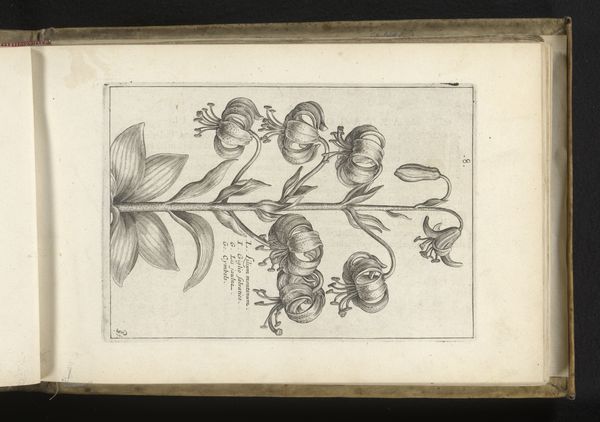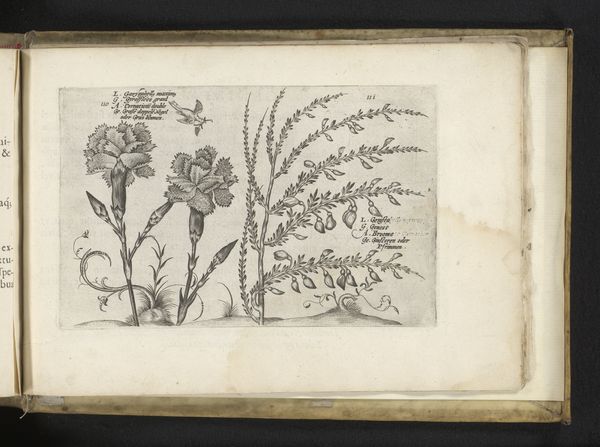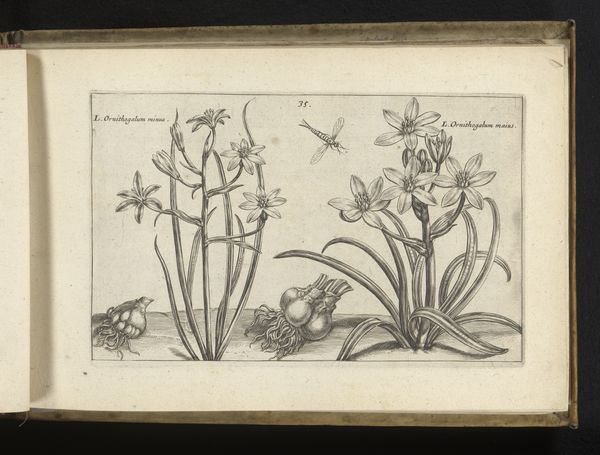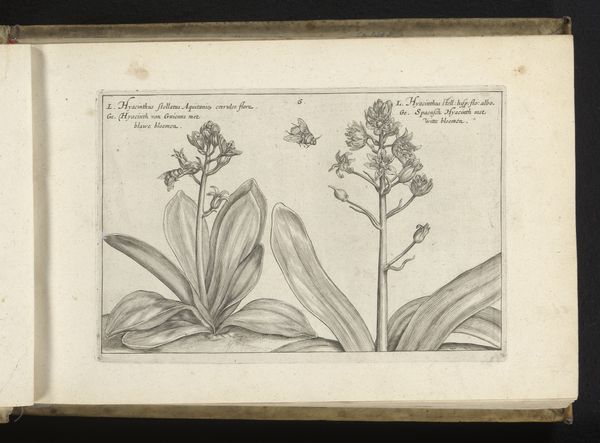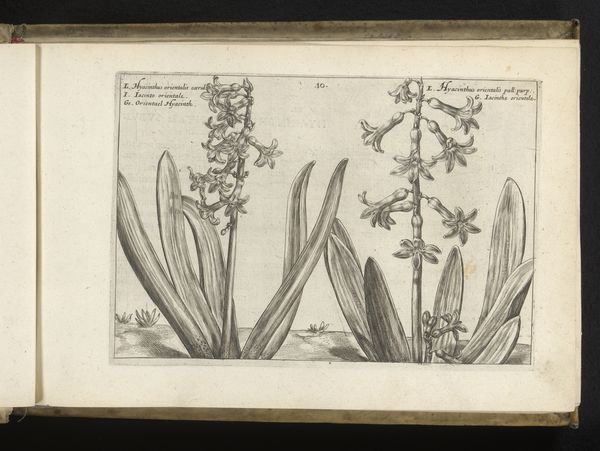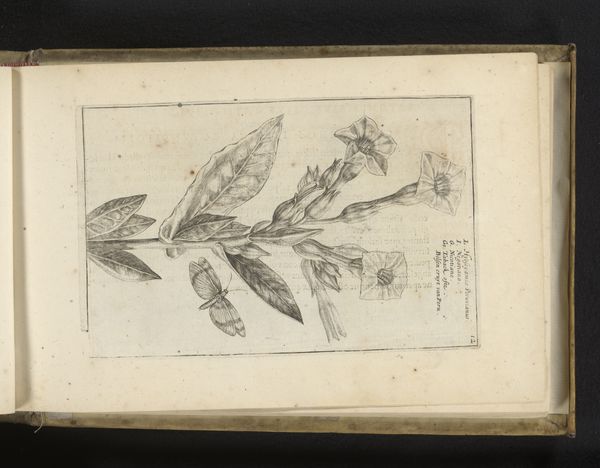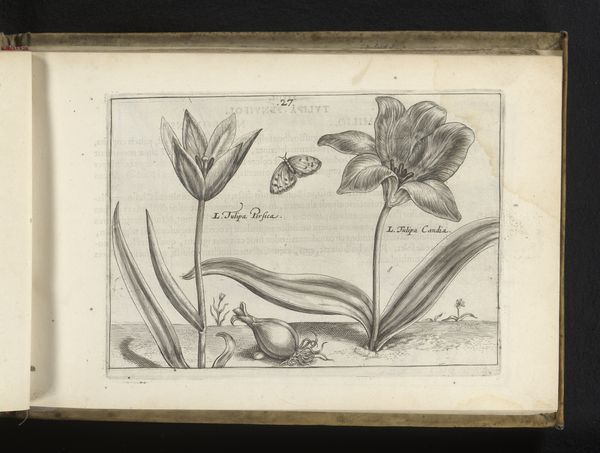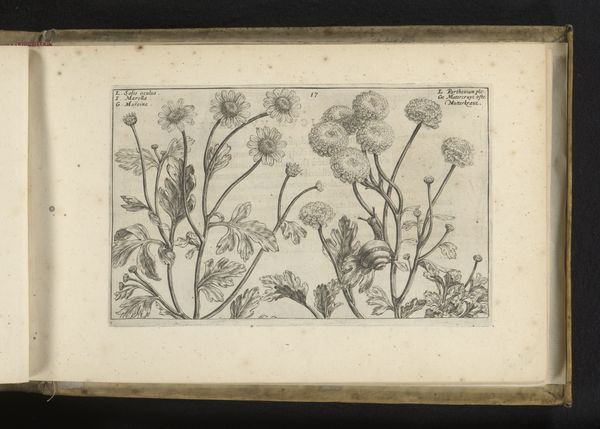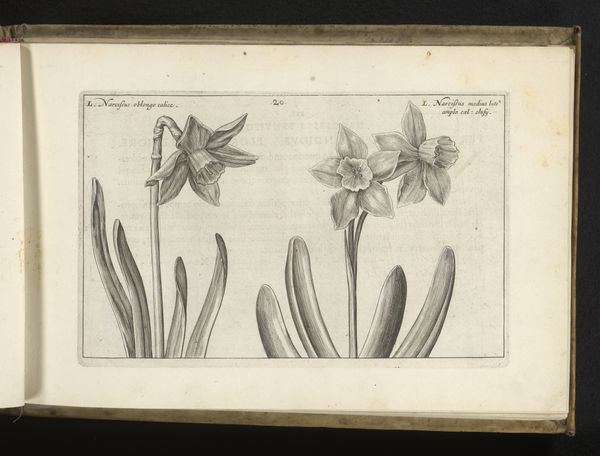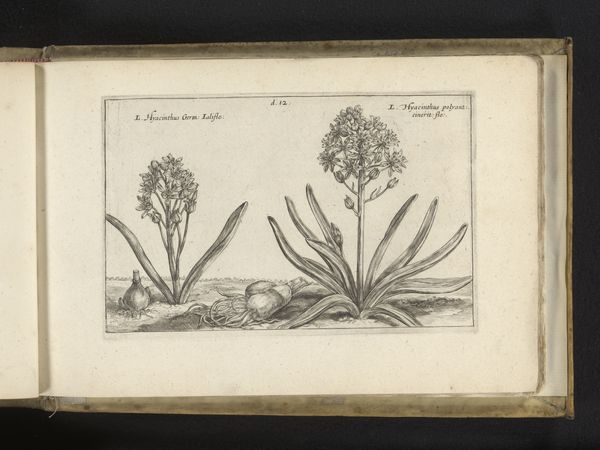
drawing, paper, ink
#
drawing
#
aged paper
#
toned paper
#
organic
#
pen sketch
#
sketch book
#
flower
#
paper
#
personal sketchbook
#
ink
#
geometric
#
pen-ink sketch
#
pen and pencil
#
line
#
pen work
#
sketchbook drawing
#
northern-renaissance
#
sketchbook art
Dimensions: height 210 mm, width 147 mm
Copyright: Rijks Museum: Open Domain
This print, “Persische lelie,” or Persian lily, was made by Crispijn van de Passe the Younger, likely in the first half of the 17th century. It is an etching, a printmaking technique that relies on the corrosive action of acid to create lines in a metal plate. Here, the relatively simple materials and processes used – metal, acid, paper, and ink – belie the great skill that van de Passe brought to bear. Notice how he created the illusion of depth and form. He carefully controlled the etching process to produce a range of line weights, creating the subtle gradations of tone that give the lily and the butterfly their lifelike quality. Consider the social context for this image. As a print, it would have been relatively inexpensive, allowing van de Passe to reach a wide audience. He was part of a burgeoning industry, catering to a growing middle class with an appetite for knowledge and beauty. Etchings such as this one helped to democratize access to the natural world, inviting viewers to appreciate the intricate details of a Persian lily. This print reminds us that even the simplest of materials, when combined with skillful making, can have a profound cultural impact.
Comments
No comments
Be the first to comment and join the conversation on the ultimate creative platform.
